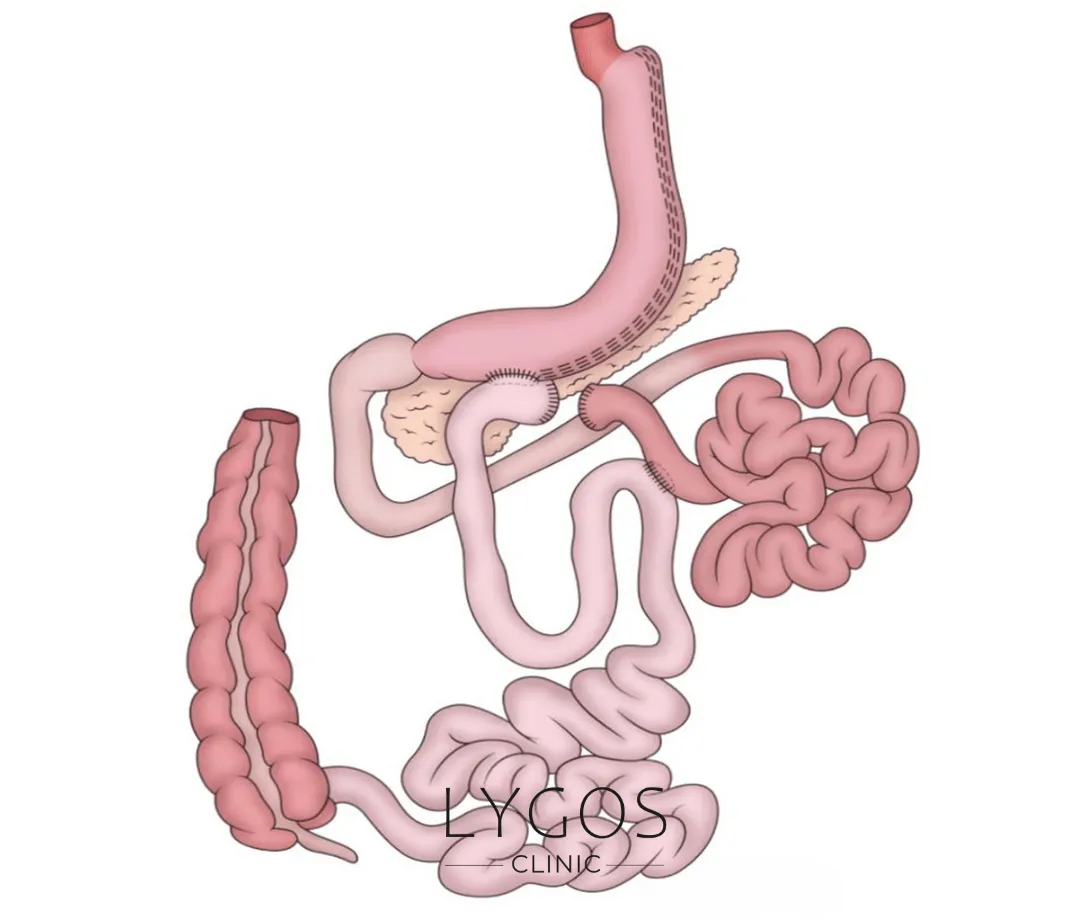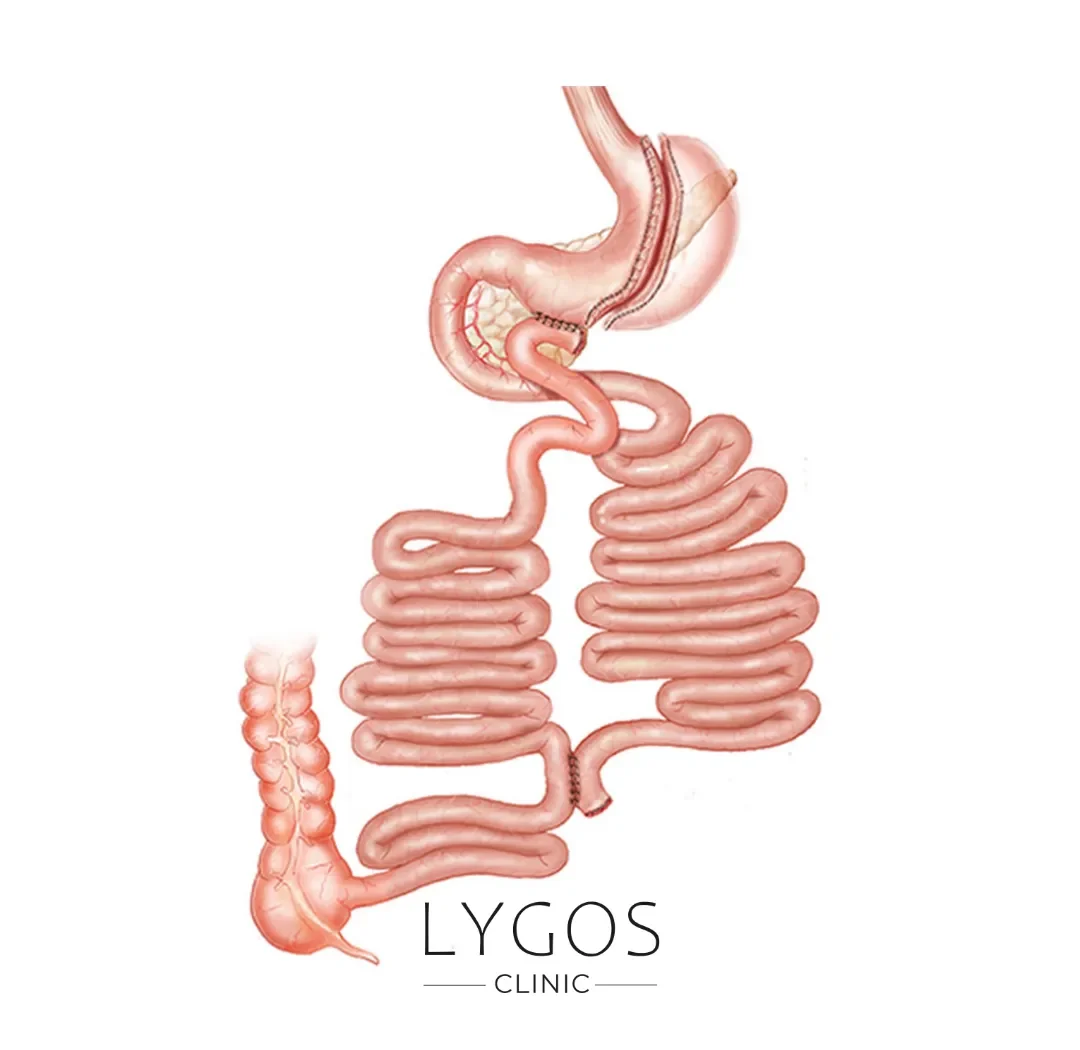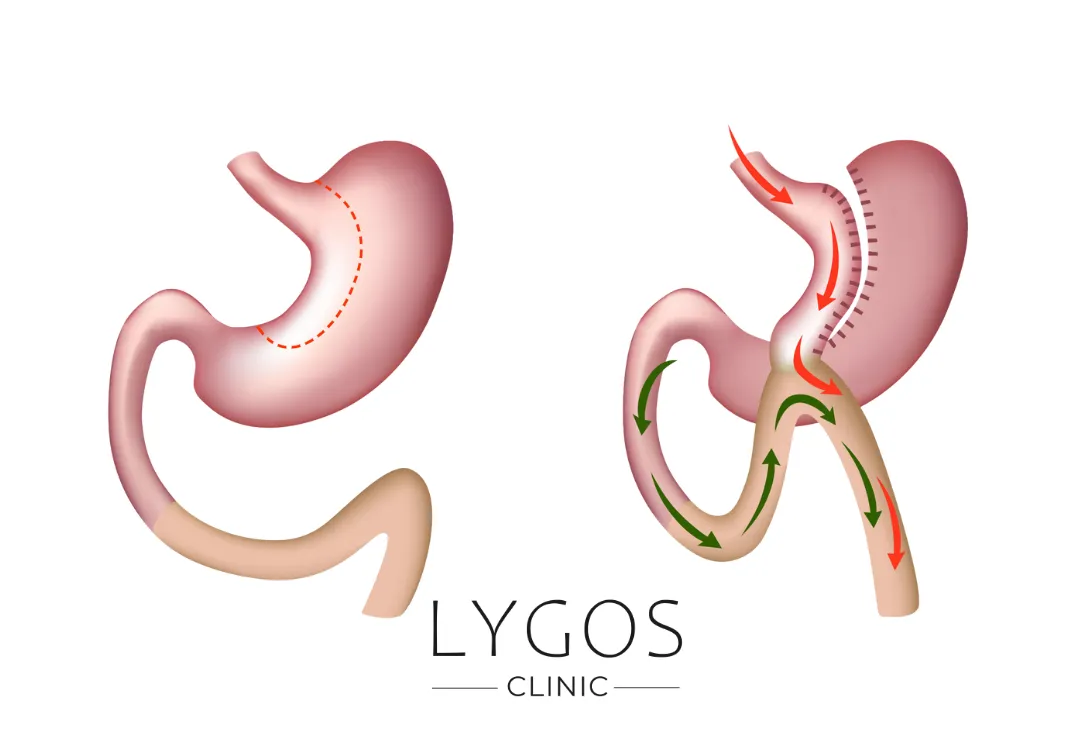Transit Bipartition Surgery
A sugar-free and active lifestyle is the foundation of the fight against type 2 diabetes. In the second stage, insulin supplementation comes into play. This method increases the amount of the hormone insulin in the blood, allowing glucose to enter the cells. However, this method offers a temporary solution. When the level of the hormone insulin exceeds the limits of supplementation, it is necessary to switch to other treatment methods.
For patients who cannot control their diabetes with insulin supplementation but do not want surgery, interim treatment methods can be applied. The main aim of these treatments is to solve the underlying problems of diabetes. The most important of these problems is overweight. If patients are both underweight and have advanced diabetes (which is rare), transit bipartition surgery becomes mandatory.
Get Free Consultation
Chose Your Topic

What is Transit Bipartition Surgery?
Transit bipartition surgery is an advanced metabolic surgery method developed for individuals who are not overweight but have diabetes. It is considered one of the most advanced and effective metabolic surgery techniques. The main purpose of this surgery is to control nutrient absorption and limit food consumption.
Thanks to the very precise regulation of the absorption process, side effects related to the digestive system are very minimal. Transit bipartition surgery begins by limiting the volume of the stomach. Usually seventy percent of the stomach is rendered non-functional. This is necessary to regulate blood sugar, even if the patient is not overweight.
Thanks to this method, patients can keep their blood sugar under control by consuming less food. Transit bipartition surgery is an important innovation in the field of metabolic surgery and is seen as a new hope in the treatment of diabetes. However, before the procedure, patients should be checked by a specialist doctor to see if they are suitable for surgery.
How is Transit Bipartition Surgery Performed?
Transit bipartition surgery must be performed practically and carefully. This surgery focuses on the stomach, where a certain hormone that increases appetite is secreted. Part of the designated area is removed. The remaining part is closed by stapling the cut points. This minimizes the risk of leakage. After the first stage is completed, the intestines are intervened.
During transit bipartition surgery, a mark is placed at a point between 130 and 150 centimeters from the lower part of the intestines. The intestines are divided in two by moving upwards another 100 to 120 centimeters from the marking point. The upper end of the lower intestine is connected to the bottom of the stomach as a second route. The original piece of intestine coming out of the stomach is connected to the lower intestine at the first marking point.
This creates two distinct intestinal tracts that merge as they approach the anus, but are quite far apart at the top. This new arrangement both limits food absorption and reduces stomach volume, resulting in less food consumption. After surgery, patients' appetite decreases and their blood sugar is more effectively controlled. This method is considered an important step in the treatment of diabetes. Thanks to this method, patients have a great opportunity to improve their quality of life.


Who is Suitable for Transit Bipartition Surgery?
Transit bipartition surgery is not suitable for every diabetic patient. Patients must meet certain criteria for the surgery to be successful. Therefore, it is not possible to perform transit bipartition surgery on unsuitable patients. In addition, different surgical methods may be preferred depending on the patient’s condition. So, who is suitable for transit bipartition surgery?
This surgery is only applied to patients with type 2 diabetes. Patients with type 2 diabetes must have sufficient insulin reserves, i.e. the capacity to produce insulin. In addition, their body mass index (BMI) should be between twenty and thirty. In general, it is sufficient for patients to have a BMI between 25-30. Other metabolic problems accompanying diabetes reduce the suitability for surgery.
Patients who are eligible for transit bipartition surgery are expected to have tried all non-surgical methods without success. In addition to these conditions, each patient's specific health situation is also evaluated. No one should decide whether they are suitable for surgery based on what they have heard. Suitability is only determined after a thorough medical examination.
Therefore, a comprehensive medical evaluation is essential when considering transit bipartition surgery. Taking into account the patients' health status, insulin production capacity and body mass index, the most appropriate treatment method is determined. Decisions to be taken under the guidance of specialist doctors and as a result of detailed examinations ensure that the right steps are taken for the health of the patients.
What are the Risks of Transit Bipartition Surgery?
Within the scope of metabolic regulations, transit bipartition surgery has been observed to have significant effects on type 2 diabetes. After this surgery, some patients are able to control their blood sugar levels without medication. However, as with any surgical intervention, transit bipartition surgery has certain risks.
For some patients, these risks can manifest as postoperative nutritional deficiencies, stomach problems or intestinal complications. Although this surgical procedure is an important step in the fight against diabetes, each patient’s condition should be carefully evaluated. In this way, the most appropriate treatment method can be determined and patients’ health and quality of life can be maximized.

Benefits of Transit Bipartition Surgery
Laparoscopic Transit Bipartition
Transit bipartition surgery is an advanced surgical intervention performed laparoscopically. During this procedure, small incisions are made in the abdomen and the surgery is performed using a closed technique. Laparoscopic transit bipartition allows for a faster healing process compared to open surgery. First, gastric sleeve surgery is performed. Then, the first 250 cm of the small intestine, which is about 5 meters long, is preserved and the small intestine is divided into two at a marked point. One part of the cut small intestine is integrated into the reduced stomach, while the other part is combined in the last 150 cm of the small intestine.
The main purpose of laparoscopic transit bipartition surgery is to provide drug-free sugar control, especially in Type 2 diabetes patients who are normal or underweight. Thanks to this surgery, normal duodenal anatomy and structure are preserved while sugar control is achieved.
With laparoscopic transit bipartition surgery, 70 percent of the stomach volume is rendered dysfunctional by sleeve gastrectomy. This procedure reduces the desire to eat by stopping the secretion of the hunger hormone called Ghrelin. Thus, the patient can both control sugar and lead a healthy life by keeping the feeling of hunger to a minimum.

Transit Bipartition Surgery
Those who have transit bipartition surgery live a healthier life. Protecting the digestive system to a certain extent also prevents possible problems. At the same time, patients who can perform basic functions comfortably start to live a healthy life. Especially people who get rid of situations that put their health at risk, such as joint pain and difficulty breathing, can move more comfortably.
Apart from the above-mentioned details, the postoperative change also affects those who undergo transit bipartition surgery psychologically. Patients who have a fit appearance feel happier and freer in their social lives as they improve both health and aesthetics.
Nutrition after Transit Bipartition Surgery

Before and After Transit Bipartition Surgery
The change that occurs before and after transit bipartition surgery manifests itself in many ways. This procedure, which is one of the most ideal methods for the patient, usually does not cause any health problems if the doctor’s controls are regularly attended. It also preserves the basic functions of the body. This allows the patient to continue his/her life without any problems before and after transit bipartition surgery. People who complain of joint pain and cannot go out can get rid of their problems thanks to this method. The patient, who turns into a different person before and after transit bipartition surgery, gains a fitter and healthier structure. In this way, he also regains his self-confidence.
Transit Bipartition Surgery Costs
Transit bipartition surgery costs vary according to the needs of the patient. If the patient’s problem is treated with different methods, the costs are determined accordingly. At the same time, health problems experienced by the person can also affect the costs. Transit bipartition surgery costs may also increase according to the size of the area to be treated. The cost of surgery performed by a specialist is higher.
Therefore, it should be carefully decided which doctor will perform the procedure. Transit bipartition surgery costs also vary depending on the quality of the hospital. Costs are usually higher in a hospital with high quality and state-of-the-art equipment. However, it should not be forgotten that the success rate will also be reflected in the costs.
Therefore, transit bipartition surgery costs can increase with the right choice of hospital and doctor. If you want to get more detailed information on the subject, you can contact the expert team of Lygos Clinic.

Frequently Asked Questions About Transit Bipartition Surgery Costs
BLOG

Is Breathing Through the Mouth Harmful?
Chose Your Topic Is Breathing Through the Mouth Harmful? Breathing is one of the most fundamental needs of life. However,

Does Rice Water Make Hair Grow? | Benefits of Rice Water
Chose Your Topic Does Rice Water Make Hair Grow? Natural methods in hair care have become quite popular in recent

Breast Lump | Types: Benign, Malign and Causes | LYGOS 2025
Breast Lump While cancer stands out as one of the most common health problems today, early diagnosis rates are also





